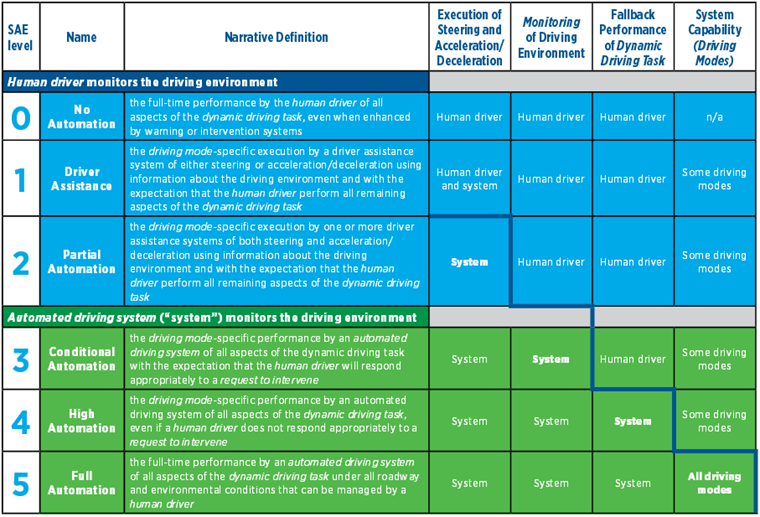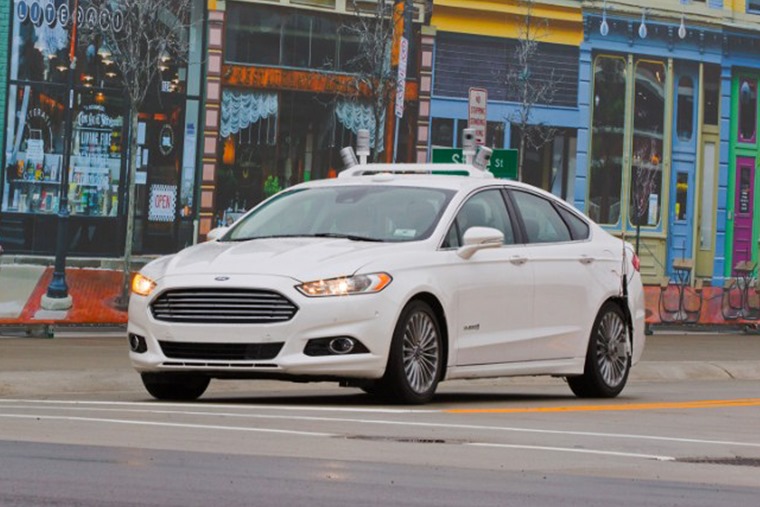SAE automation ratings: What does a driverless car actually mean?
Forget the Focus RS or Mustang, the most important new car announced by Ford in 2016 is one that it’s yet to build. This is an autonomous vehicle that it intends will take vehicle sharing to whole new level and the Blue Oval wants to have it up and running as a ‘driverless’ car by 2021.

This is an impressive statement from Ford and a seismic shift from one of the world’s largest car makers. It means autonomous vehicles are being taken from the fringes of vehicle design and strategy right to the core of the business.
To do this, Ford says its new car will comply with level 4 of the Society of Automotive Engineers’ rating system for cars without a steering wheel or throttle pedal. That sounds mighty exciting, but what does it actually mean? And how does that affect us as car drivers?
SAE automation ratings
Well, first off, the Society of Automotive Engineers (SAE) is a not-for-profit organisation made up of 128,000 engineers and related technical specialists from around the world. Not only do they come from the motoring arena, there are members from aerospace and the commercial vehicle world, so you quickly realise this is a body made up from the best minds in the business.
In a similar way to how Euro NCAP has become the bar-setter for safety in Europe, the SAE decides where car makers should be aiming for with their technical developments
Just as importantly, it means that any standards set down by the SAE are completely valid and stringent.
In a similar way to how Euro NCAP has become the bar-setter for safety in Europe, the SAE decides where car makers should be aiming for with their technical developments. That applies across a wide range of automotive disciplines, including safety, design and almost every aspect of building a car.
It also includes autonomous vehicles and SAE has identified six levels of autonomy. So, when Ford says its new car will comply with SAE’s level 4, where does that fit into the half dozen ratings?

Level 0
At the most basic end of the spectrum, we have level 0 and, as the name clearly suggests, this is applied to cars that have no automation whatsoever. This is given to the most basic cars that require full driver participation in every element of their control and function.
Now, you might think that means ancient cars that pre-date the modern era of safety systems, but you’d be wrong. A level 0 rating can be given to a car with warning or intervention systems, it’s just that these systems always play second fiddle to the driver’s choices.
Level 1
So, now we come to level 1 that is for cars with some driver assistance. This is for cars that have driving modes specific to certain operations of the car, such as steering or throttle use. In this instance, the systems are there to help the driver but not to take over control. This is the level where most current cars are.
Level 2
To get a level 2 rating, a car must have driving assistance for the steering or acceleration and deceleration, or for both. This is regarded as partial automation and could apply to cars with adaptive cruise control that maintains a safe distance to the car in front and adjusts the car’s speed to keep that gap constant.
It could also mean cars with collision avoidance technology that apply the brakes should the driver fail to react to a hazard. At present, this is highest rating we can expect of most modern cars. To achieve this Conditional Automation ranking, the car must be expected to perform the major tasks of driving without the need for human intervention.
A matter of much debate, the Tesla Model S with its autonomous mode is arguably the most advanced level 2 on the market today.
Read how a semi-autonomous Tesla ferried its ill-stricken driver to hospital
Level 3
There is a significant step up to level 3 as this is where the car and its technologies begin to come to the fore and the driver takes on the role of fall-back precaution. To achieve this Conditional Automation ranking, the car must be expected to perform the major tasks of driving without the need for human intervention.
However, this point on the scale also allows the human pilot to intervene and take control and the car will respond.
Level 4
Where Ford intends to be is level 4 on the SAE scale. It’s called High Automation and it assumes all driving tasks will be undertaken by the vehicle. The driver becomes secondary to the operation of the machine and, even in an emergency situation, the vehicle will act to resolve matters. However, the car will still react to the human touch, but to all intents and purposes you can leave the driving to the car.
Level 5
Finally, we come to level 5 and Full Automation. While this might sound like the ‘Terminator’ film has come to reality, this level of autonomy is still some way off. It allows for full-time performance of all aspects of the car’s operation to be run by automated systems. Essentially, if a human can do, a level-5 rated car can do it as well as or better.

Volvo and Uber are joining up to create a fully autonomous vehicle
As you can see, with Ford aiming for level 4 autonomy, it’s setting itself a very high bar to meet and one that means the car is the primary source for driving and decision making about the safest and best route.
Fully automated future?
For the Luddites who might think this is all science-fiction-become-fact, Ford’s chief technical officer, Raj Nair, commented: “We have an advantage because of our ability to combine software and sensing technology with the sophisticated engineering necessary to manufacture high quality vehicles.”
Well, he would say that, wouldn’t he? But let’s not forget Ford is the company that put the world on wheels with the Model T and plenty thought it was a bit fanciful at the time. Be in no doubt, autonomous cars are coming.
